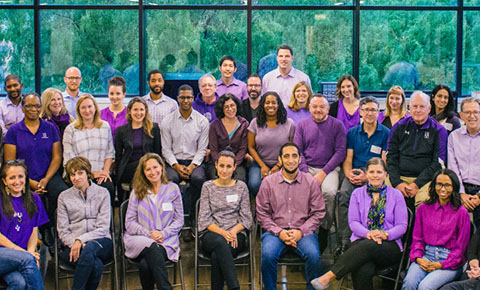SESP: A Catalyst During Crisis
 When SESP Dean and economist David Figlio created the syllabus for his popular undergraduate class, he had no idea he’d be teaching it during the worst economic crisis of anyone’s lifetime.
When SESP Dean and economist David Figlio created the syllabus for his popular undergraduate class, he had no idea he’d be teaching it during the worst economic crisis of anyone’s lifetime.
With a few tweaks, however, the Economics of Higher Education Policy became one of Northwestern’s most relevant and timely offerings. The students were able to analyze higher education issues through the view of an economist – and in the context of pandemic. Students also benefited from the expertise of those in the trenches, including Northwestern University president Morton Schapiro, who provided a real-time overview on Universities and Northwestern.
But classes aren’t the only place to see how SESP nimbly pivoted to help Northwestern lead during the pandemic. Some scholars have developed new pedagogies that will be maintained even when students return to a physical classroom.
Some quickly adapted their research in the COVID-19-era, giving it an even broader impact. And some are applying their knowledge and insights to help scaffold and support learning and human development in completely new ways.
Below, we’ve highlighted a few ways SESP faculty members and instructors are responding to a radically changed landscape to help make more effective scholars and community members. This page will be routinely updated as classes evolve.
The Class: The Economics of Higher Education Policy:
The professor: David Figlio, Orrington Lunt Professor of Education and Social Policy
Figlio has always invited guest speakers into his class. But for the spring quarter, the virtual environment allowed him to Zoom in even more: eleven expert scholars whose work the students read, including Schapiro; Susan Dynarski of the University of Michigan; Ulf Zoelitz of the University of Zurich; and SESP alumna Cassandra Hart of the University of California Davis.
Students discussed the structure and functions of a university, financing higher education, college choice, college rankings, admissions and enrollment, financial aid, online vs. face-to-face instruction, staffing the college classroom, and student life. Using the Zoom whiteboard, Figlio generated lively group discussions on topics such as how to measure higher education success and the cost-benefits of going to college.
Students graded themselves on each assignment and for the overall class, which culminated with a group project designed to improve Northwestern University. Last spring, one of the four projects was immediately implemented; another is in the works.
What he’ll bring back: Despite having more than 25 years of undergraduate teaching under his belt, Figlio has always struggled to get more than about one-quarter of students to share in class. “With the Zoom whiteboard feature I can get the entire class to share nearly simultaneously -- a real equity enhancer,” he said. “Given that most students bring their devices to class on a regular basis when we are in person, I intend to incorporate this virtual functionality into my physical classroom in future terms."
The Class: Redesigning Everyday Organizations
The professor: Reed Stevens, professor of learning sciences, founder and principal investigator of FUSE, a STEAM exploration program.
For the last ten years, students in Professor Reed Stevens’ Learning and Organizational Change/Learning Sciences class have conducted field research to identify “chronic snags” in everyday organizations, and then proposed “designs for change” that address these chronic snags.
When the pandemic upended everything from grocery shopping to public transportation, Stevens iterated and designed a special topics class – subtitled Lessons for the Next Pandemic —that challenged students to make living and working better in the altered conditions of the pandemic.
While students previously left the classroom to conduct interviews, observe and document activities in everyday life, they now could only conduct fieldwork in situations they could safely participate in during the pandemic, so the student teams have had to be creative in assembling evidence for their chronic snags from various online sources that augmented their more limited fieldwork.
At the end of course, in lieu of presentations to a panel of experts, four specialists from around the country agreed to offer feedback on student team videos that represent their research and design work.
What he’ll bring back: “I liked mixing the synchronous and the asynchronous,” said Stevens. “I shortened the class time by preparing a recorded lecture and having students watch and comment through Panopto, a tool for annotating videos.” Stevens also said he felt like was able to reduce the busywork because students were asked only to write either two comments and a question or two questions and a comment. “And the questions and comments the students have been posing, since at least the midpoint of the class, have been really, really good,” he said. “I read some of the questions at the beginning of the class and then connect them to one or more of the key ideas from that week’s session. I really believe in gathering people around a common object—a document or a video—to bring out people’s different perspectives. This was a bit harder in some ways this quarter and in some ways easier, but in moving forward, I’m going to be thinking about how I can increase the quality of conversations, either synchronously or asynchronously, around these common objects.”